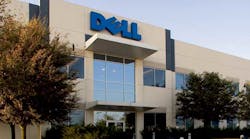Supply Chain and Logistics: Dell Taps into Innovation to Reach Emerging Markets
Back in the 1990s, computer maker Dell Inc. (IW 500/20) became the poster child for supply chain efficiency largely thanks to its "direct model," which shifted a make-to-stock philosophy to make-to-order. That transition helped Dell reduce its cycle times to levels that had been unthinkable for the high-tech industry, allowing the company to carry inventory for just a few days rather than for three to four weeks. And other industries, particularly the consumer-packaged-goods field, were quick to notice Dell's success and began shifting their own supply chains toward the direct model.
Problem is, supply chain best practices aren't etched in stone, and as Dell learned, that innovative spirit that led to the creation of the direct model needed to be tapped into again and again to ensure the company stayed relevant to the current needs of its customers.
See Also: Lean Supply Chain Logistics Best Practices
"We discovered that only one in four of our customers were using the direct model anymore," says William Hutchinson, Dell's vice president of global logistics. While the direct model worked phenomenally well when Dell was aiming for a largely mature customer base, its customers today are just as likely to be from emerging markets with immature infrastructures.
"New business dynamics and customer needs require innovation," Hutchinson says, by way of explaining why Dell's focus has shifted to innovation itself, particularly within its supply chain. "Supply chain performance can be a competitive differentiator for us today, as the direct model was in the 1990s."
Dell's supply chain and logistics costs amount to $2 billion per year, serving 13 million unique customers. As it focuses on expanding its global reach, Dell is enabling its full supply chain potential through a continuous-optimization framework, he explains, based on four steps:
1. Assess what's going on in the business.
2. Design the supply chain to match customer requirements.
3. Enable that capability.
4. Stabilize the situation to make sure it works and will continue to keep working.
"We deploy that structured approach to identify the full logistics network potential in all markets," Hutchinson notes. Dell's supply chain team begins by looking at current costs in all relevant areas: by region, country, product, service level, transportation mode and lanes. They then identify the cost drivers, based on actual shipments. From that information, the company can evaluate future opportunities and the full potential cost of being in that new market.
Hutchinson notes that Dell's staff was inspired recently by a visit from Harvard professor Youngme Moon. One of Moon's tenets is: If you try to close the gaps between you and your competition, you'll become as mediocre as them. In that light, Dell has chosen to compete by focusing on where it is different, and on its supply chain strengths.




